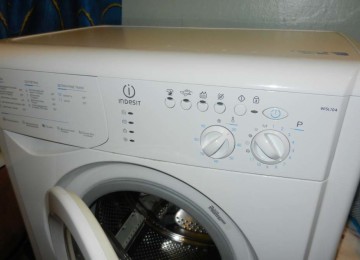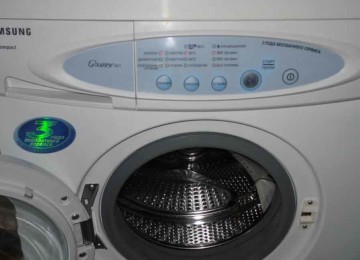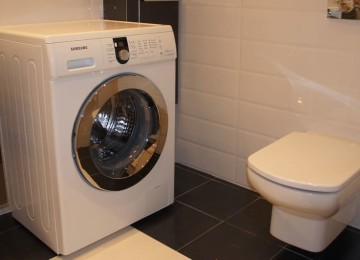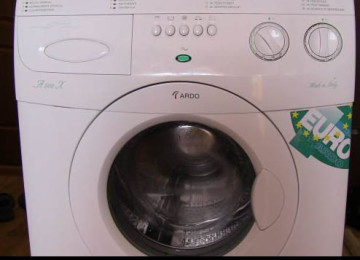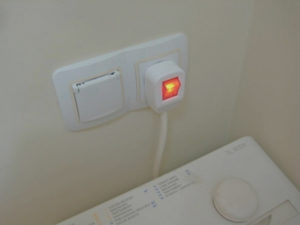 Like all household appliances, the washing machine requires an electrical connection. In most houses and apartments, washing is done in the bathroom, so there are special requirements for installing an outlet for a washing machine.
Like all household appliances, the washing machine requires an electrical connection. In most houses and apartments, washing is done in the bathroom, so there are special requirements for installing an outlet for a washing machine.
The bathroom has high air humidity, so the risk of receiving an electric shock here is many times higher than in any other place. It would be wrong to focus only on installing an outlet for a washing machine.
The following questions cannot be ignored:
- Condition of electrical wiring;
- Availability of protection and shutdown devices;
- Grounding condition.
Let's consider the listed points in more detail.
Wiring Requirements
According to the requirements of regulatory documents on electrical safety (PUZ - rules for electrical installations), bathrooms belong to the category of high-risk premises. It is generally prohibited to install sockets in them, but an exception is made for domestic premises if certain requirements are met. One of the requirements states that wiring in the bathroom must be done only in a hidden way to prevent direct water ingress.
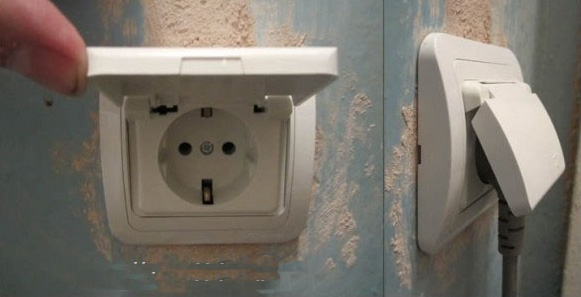
Socket for washing machine in the bathroom
The cross-section of the wires must be designed for the current consumed by the washing machine with some margin.
Since the current value is usually not indicated in the passport data, you can calculate it yourself, knowing the power of the device using a simple formula:
I=P/U,
where P is the rated power of the washing machine;
U is the network supply voltage.
For example, if the power of the washing machine is 2.2 kW, then the current consumption will be 10 A.
Many sources provide voluminous tables to determine the permissible wire cross-section, but most of the information in them is unnecessary. With sufficient accuracy, you can calculate the wire cross-section at the rate of 2 kW of power per 1 mm2 copper wire. Thus, to connect a washing machine with a power of up to 5 kW, it is enough to take a copper wire with a cross-section of 2.5 mm2 or aluminum with a cross section of 4 mm2. If an additional boiler or other powerful load is installed in the bathroom, then the cross-section must be taken larger, again, based on the total power consumption.
The best option is to lay a separate cable for the socket washing machine. If this option is chosen, then only copper wire should be used for work, since aluminum is needed with a larger cross-sectional area. This cable is quite rough, rigid, and difficult to work with. And most importantly, its strength is much less than copper, which, even being multi-core, is very difficult to damage, even without much experience in installation work.
Note! The examples and recommendations refer to the cross-section of the wire, not its diameter! You can determine the cross section, knowing the diameter, using the well-known school formula.For multi-core wires, the total cross-section is the sum of the cross-sections of all elementary wires.
Protection and shutdown devices
In case of emergency shutdown of devices due to current leakage (for example, in case of incomplete short circuit, which often happens when the heating element is damaged), the washing machine must be connected through RCD - residual current device. Such machines monitor the correspondence of currents in the neutral and phase wires, and in the event of a leak with a current of 30 mA or higher, they instantly open the power supply circuit of the device.
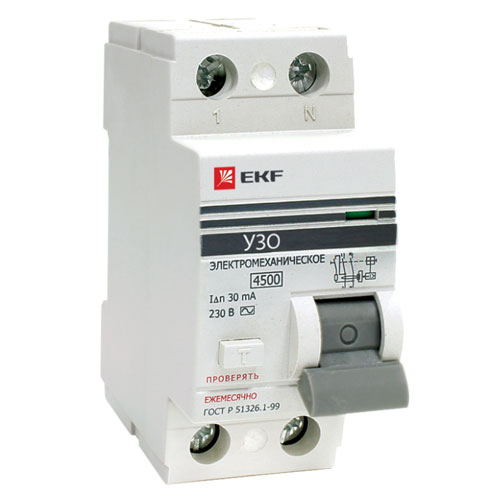
RCD - residual current device
This feature of connecting the washing machine once again confirms the need for separate wiring. Because if several devices are connected through the RCD, then false protection triggers are possible, especially due to devices with a long operating life.
On sale you can find sockets in which the RCD is already built-in. In some cases this can be convenient, although such sockets are large and do not always fit well into the interior.
Many manufacturers of household appliances equip their devices with a built-in RCD, which is located on the power cord near the power plug.

Connecting a residual current circuit breaker and a residual current device.
In addition to automatic shutdown, the machine can be used to quickly disconnect the load without removing the power cord of the washing machine from the socket in the bathroom. You can't do this all the time, since automatic switches are not designed for frequent switching and quickly fail.
Grounding
Like any consumer of electricity, the washing machine must be grounded. Equipment manufacturers provide for the connection of the washing machine to a socket with grounding contacts, which we usually call a Euro socket.
The grounding contact in the socket for the washing machine must be connected to the corresponding terminal of the apartment distribution board or to the grounding bus.
In apartment buildings, the state of grounding is monitored by the energy supply organization. In private houses, the residents are forced to do this themselves.
Installing a socket
Installing a socket in the bathroom must be done in compliance with the minimum distances from sources of possible water ingress. These include sinks, shower stalls, and so on. The distance from the sink to the socket installation location should be at least 60 cm. Sockets rise to the same height above the floor level. Accordingly, it is strictly forbidden to install sockets under sinks or bathtubs. In most cases, it is convenient to place the socket above the level of the washing machine, slightly to the side of it. This is especially important for machines with vertical loading.
To be more strict, the socket placement in the bathroom should be in a place with a minimal risk of water ingress, since no one is immune from a burst water supply or sewer pipe, from flooding by neighbors from the upper floors.
The socket for the washing machine in the bathroom must be waterproof. All devices have a certain protection class, which is marked with IPxx symbols. Instead of x symbols there are numbers from 0 to 9. The first number characterizes protection from mechanical damage, and the second is protection from moisture. For bathrooms, the last digit must be at least 5.
Such sockets have a hinged cover that covers the openings in the event of a plug being missing. Sealing gaskets protect the internal parts from the penetration of water droplets.
When installing the socket, care and attention is required so as not to damage the plastic case and sealing gaskets, since in this case all the advantages of waterproof equipment will be negated.
Installing a washing machine in the kitchen
The kitchen as an installation room is not fundamentally different from the bathroom. The main nuance is that due to the small dimensions of standard rooms in most cases The washing machine can be installed under the work surface of the kitchen furniture. In this case, the location of the outlet should also be in an easily accessible place and with the same minimum distance from the kitchen sink.
What not to do
It is strictly forbidden to use extension cords in bathrooms, especially those of dubious manufacture. Not only are they in no way protected from moisture, most of them do not have a grounding contact, and the cords are made of wire with a small cross-section.
The bathroom, as mentioned above, is a room with high humidity, where the effect of high voltage electric current is especially strong.
The cost of any mistake in connecting electrical equipment can be quite high, so you need to strictly follow the recommendations and not hope that nothing bad will ever happen.






